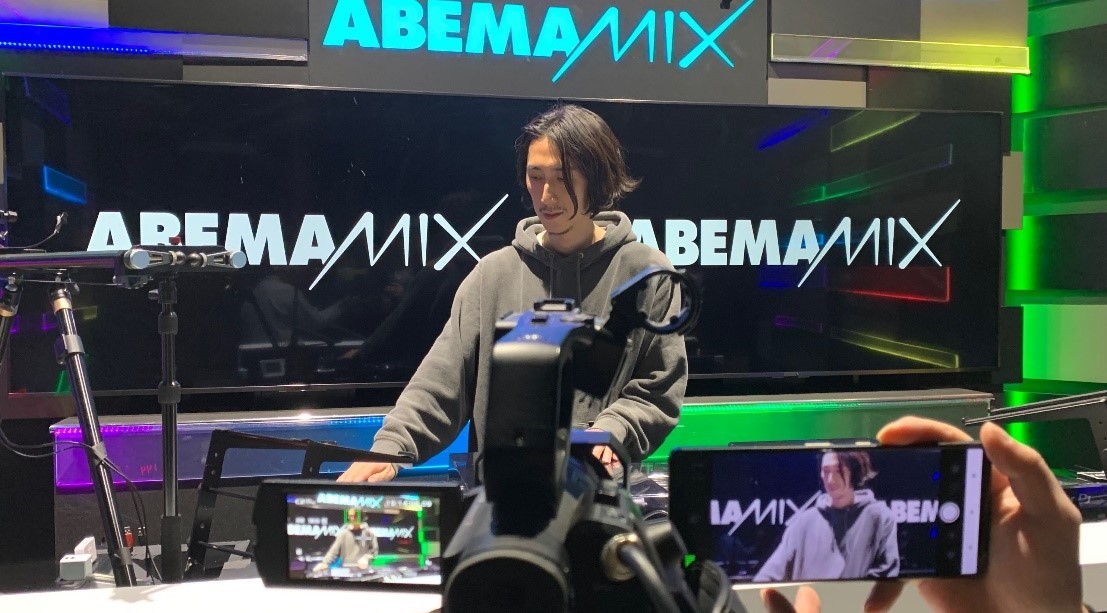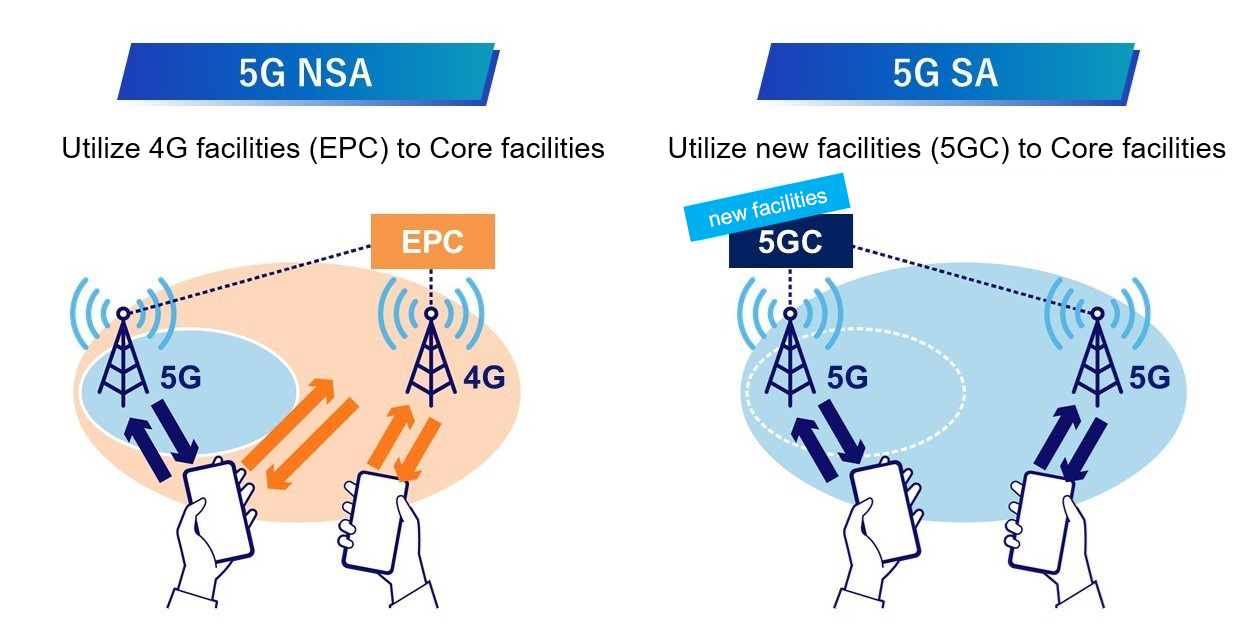- KDDI HOME
- Corporate Information
- Investor Relations
- IR News
- 2022
- Japan's First Live Broadcast of "ABEMA" will be launched on 5G SA
Japan's First Live Broadcast of "ABEMA" will be launched on 5G SA
February 21,2022
KDDI Corporation
~5G SA commercially available for corporate customers starting February 21~
On February 21, 2022, KDDI, in collaboration with ABEMA, a cutting-edge TV network operated by AbemaTV (Head Office: Shibuya-ku, Tokyo; President: Susumu Fujita; hereinafter, "AbemaTV"), will be the first company in Japan to broadcast live video using 5G Stand Alone (5G SA) [![]() 1] [
1] [![]() 2] [
2] [![]() 3].
3].
This initiative will be implemented as part of the HIPHOP channel "ABEMAMIX," scheduled to broadcast from 7:00 p.m. on that same day and will provide stable video relay using 5G SA compatible smartphones and network slicing [![]() 4].
4].
In addition, KDDI will launch 5G SA service for enterprise customers on February 21, 2022.

<Video relay test in a 5G SA commercial environment>
■5G SA offered to corporate customers
KDDI launched 5G services using the non-standalone method in 2020. 5G SA is a system that enables communications using only 5G technology, including Core facilities. In addition to high-speed and high-capacity communications, 5G SA enables the implementation of new functions such as network slicing. The introduction of 5G SA to industries that have traditionally used landlines is expected to improve operational efficiency and lower costs through the use of wireless technology.

<Comparison of 5G NSA and 5G SA>
■Outline of this initiative
A part of the video streamed live by ABEMA will be relayed through 5G SA compatible smartphones.
When relaying video, it is necessary to ensure the quality of video transmission for relay even in areas where people gather, such as downtown areas. 5G SA not only enables high-capacity video transmission, but also enables stable video transmission unaffected by other communications by logically separating communications for relaying through network slicing. In the future, KDDI aims to reduce costs by simplifying relay facilities; and realize new video experiences with a sense of realism through multi-angle relay from smartphones.
Mr. Yusuke Masuda, in charge of studio facilities at CyberAgent, Inc. said as follows;
"At present, if stable transmission is not possible with 4G LTE, we have taken measures such as bundling lines with dedicated equipment, However, in the preliminary video relay test, KDDI was able to demonstrate that 5G SA's network slicing enables stable delivery even under heavy line load, which was more effective than we had expected. We have high expectations for KDDI's 5G SA to deliver high-quality, stable video to viewers when broadcasting live from the event site in the future."
Going forward, KDDI will continue its efforts to create enterprise use cases and new services for the 5G SA era, while supporting the DX of video relay and the realization of new video experiences.
Please refer to the appendix for more information on the 5G SA offering for corporate customers and this initiative.
<Appendix>
■Provision of 5G SA to Corporations
1. Overview
In addition to 5G services in 5G NSA, KDDI will start offering 5G SA, which combines 5G dedicated core facilities and 5G base stations, to enterprise customers on February 21, 2022.
In addition to high-speed and high-capacity communications, 5G SA will be able to provide new functions such as network slicing by configuring facilities using only 5G dedicated technologies.
2. Fee
To be determined on a case-by-case basis.
■About this initiative
1. General Issues in Video Broadcasting and Expectations for 5G SA
In order to deliver clear and stable images from a specific outdoor location, a vehicle with specialized equipment is dispatched to the location and the images are relayed via a dedicated radio band or satellite.
Mobile relay devices that can relay images with a simple equipment configuration are becoming more widespread, but in order to provide stable image relay, it is necessary to use dedicated devices that transmit images by bundling multiple mobile lines.
By using 5G SA, relaying will be possible with a simpler system configuration, and it is expected to reduce costs by replacing dedicated equipment such as relay vehicles and mobile relay devices, as well as improve breaking news coverage by news organizations by allowing a small number of staff to quickly relay using smartphones and other devices.
2. Initiatives with AbemaTV
When AbemaTV broadcasts video from outdoors, it mainly uses dedicated equipment to bundle multiple mobile lines and transmit the video to the studio.
In this project, we built an environment where video can be transmitted via 5G SA to the public studio "UDAGAWA BASE" at "Abema Towers 1F" in Shibuya, Tokyo. In this environment, the network slicing of the 5G SA logically separates the ABEMA video relay network from the network used by ordinary smartphones to ensure the communication quality necessary for relay.
With ABEMAMIX, camera images are relayed live via 5G SA-compatible smartphones connected to the ABEMA dedicated network. By doing so, we will confirm that it is possible to stably relay video of the same quality as wired video with simplified equipment configuration.
AbemaTV will continue to receive feedback from viewers on the video quality and stability, as well as verification at the production site to improve operational efficiency and reduce costs, with the aim of providing high-quality and stable video transmission from live broadcasts from event venues.